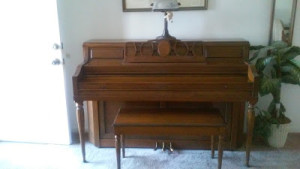When it Comes to Life and Death, the Paradox that is Humanity is Inexplicable
On January 22, 2019, New York’s governor, Andrew Cuomo, signed into law the Reproductive Health Act. This was also the anniversary of Roe v.Wade.
When the governor finished signing this bill, a suffocating wind exploded from the halls of the capitol, caused by the cheers and screams of those upstanding lawmakers who had voted to legalize infanticide. Indeed, the wind has moved like a tsunami across our land, leaving behind a foul and repugnant odor.
There is an inexplicable paradox that engulfs humanity. I believe there is a far greater number of women and men who are willing to lay down their very lives for their child, even if it is still unborn, than those people who rejoice in the death and destruction of the most innocent and helpless of all God’s creations. I have no answers for this human phenomena.
The signing of this bill and the cheering that followed brought me back to a day 40 years earlier: September 6, 1978. For my young family, that was also a day about the life and death of a baby. Mostly, it is about how one woman would go to any lengths to save her unborn child.
Loretta had entered her sixth month of pregnancy, and in the days preceding September 6, there had been little movement from the baby. On September 5, the doctor had appeared concerned but had only said that the heartbeat “could be a bit stronger.” He wanted her to return in a week.
The rest of that day there was no movement. We had gone to bed and fallen asleep. I was on my right side, and Loretta was lying against my back. Suddenly something jabbed me in the back. It was hard enough to wake me. I sat up and said, “The baby just kicked me.”
She said softly, “Yes, I know.”
It was 2 a.m., and all was dark and peaceful, but we did not fall back asleep. We just lay quietly, side by side, holding hands and waiting. A second kick never came.
The next morning, after I had gone to work, Loretta began to hemorrhage. Her mom had been staying with us for a few days — and thank God she was there. She called 911 and then called and left a message for me at work. My first stop was only ten minutes from the hospital, and I arrived there before the ambulance.
When they pulled the gurney out, I was stunned at what I saw. My wife had lost so much blood that her hair was smeared with it. Her eyes were closed and she was not moving. I stood by helplessly as they rushed her into the ER.
For those who reject and scoff at the wonder of God’s human creations, here is an example of how one woman did not. As I was standing there not knowing what to do or where to go, a priest came in and asked me if I was Larry Peterson. I just nodded, and he told me that my mother-in-law had called his parish. As Loretta was being wheeled out of the house, she made her mother promise to have a priest waiting to baptize her child. Her mom kept that promise.
There was a hospital ten minutes from our house. I was told that the paramedics wanted to go there but that Loretta demanded they take her to the Catholic hospital a half-hour away. They told her it was way too risky because of the amount of blood she was losing. She would not relent, and they did as she asked. She was determined to have her child baptized. She had knowingly and willingly put her life on the line for her baby.
Loretta survived and the baby did not. She was baptized. A few days later, the remains of Theresa Mary Peterson left the funeral home in a tiny white casket. The casket was placed on the front seat of a limousine. We followed it to Gate of Heaven Cemetery in Valhalla, N.Y. She was buried with my parents, and her name is on the tombstone. She did exist and will always be remembered.
As the great Pope, St. John Paul II said, “A nation that kills its own children is a nation without hope.”
Lest evil prevails, we must pray like never before that our nation overcomes this onslaught against the very image of God Himself.
© 2019 Larry Peterson



 So we come back to the little shepherd boy. I hear his drums, “pa rum pa pum pum” a physical declaration of his heart beating with love for the king, a testimony to all that is required of us–offering our own hearts without reserve.
So we come back to the little shepherd boy. I hear his drums, “pa rum pa pum pum” a physical declaration of his heart beating with love for the king, a testimony to all that is required of us–offering our own hearts without reserve.![IMG_1225-L[1]](http://blog.catholicwritersguild.com/wp-content/uploads/2017/10/IMG_1225-L1-300x225.jpg)
![IMG_5706-L[1]](http://blog.catholicwritersguild.com/wp-content/uploads/2017/10/IMG_5706-L1-300x225.jpg)
![IMG_5766-L[1]](http://blog.catholicwritersguild.com/wp-content/uploads/2017/10/IMG_5766-L1-300x225.jpg)


